What is HISTIOCYTOSIS?
Langerhans cell histiocytosis
Langerhans cell histiocytosis is a rare and mysterious disease that mainly affects children. This pathology was formerly known as Histiocytosis X.


Sofia Engel
Patient 9 Years

Incidence
Histiocytosis affects one child for every 200,000 inhabitants and one adult for every 600,000.
prevalence

Nicholas
Statistics from the years 2000 to 2013 show a prevalence in Argentina of 15-16 children affected by the disease per million inhabitants (in Argentina, the disease is detected annually in 40 to 60 children), it can also affect adults, although there are no statistics for them. The population in Argentina is approximately 40 million people.
Cause
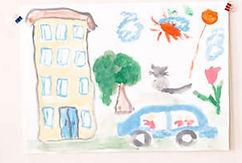

The cause of the disease is still unknown, although its investigation has intensified in recent years throughout the world. The disease does not appear to be hereditary and although the importance of environmental factors is unknown, it is possible that something present in the environment could cause an unusual reaction that triggers the disease. At present, according to the opinion of many professionals, Langerhans cell histiocytosis is not a cancer, but the treatment to be applied is similar in many aspects to that used in this pathology. Treatment and monitoring is performed by or in collaboration with pediatric hematologists/oncologists
Angie
What happens in the Body?
In the bone marrow, cells divide, mature, and are released into the bloodstream:
Red blood cells (carry oxygen from the lungs to all tissues in the body), white blood cells (deal with defense against infection), and platelets (needed to prevent bleeding).
Histiocytes are a type of white blood cell that is normally found in the blood and is part of the immune system. In certain situations, Langerhans cells (which are a type of histiocyte) spread or travel in the body, especially to places that are exposed to unknown substances. In Langerhans cell histiocytosis, for some reason, these cells accumulate, producing a type of protein that damages tissues, causing symptoms that can be diverse.
Symptoms
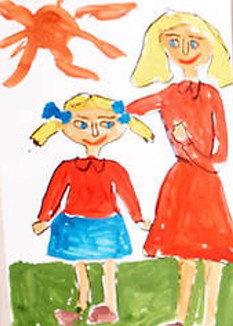
Sofia
Patients can have localized clinical forms with few symptoms (a bone lesion, which is the most common disease) or extensive involvement of many organs.
Some examples of areas affected by the disease and its consequences:
· Bones: One or more skeletal injuries.
· Skin: Lesions on the scalp, folds (armpits, behind the ears, ) and the rest of the body.
· Lungs: Difficulty breathing, cough, chest pain.
· Liver / Spleen: Increase in size.
. Lymph nodes: Inflammation.
· Blood: Decreased red blood cells, white blood cells, and/or platelets cause anemia, infections, or bleeding.
· Teeth and gums: Loose teeth or inflammation of the gums.
· Ears: Inflammation (pain), persistent discharge, decreased hearing.
· Eyes: Pain, swelling.
· Central nervous system: Increased thirst and the amount of urine (light color).
maggie
The course of events of the disease
Localized disease may resolve on its own. Some patients may have a chronic course where the disease comes and goes. Patients may have permanent sequelae (scars), example: diabetes insipidus or bone problems.
It is rare for someone to die from the disease. Langerhans Cell Histiocytosis can have very varied presentations and can be very difficult for doctors to diagnose or recognize. It can also, in some cases, be difficult to predict the course of the disease.
How to make the diagnosis
Diagnosis is determined by examining samples (biopsy) taken from affected tissue, usually bone, skin, lymph nodes, or ear. To determine the extent of the disease, complementary studies should be carried out, for example:
Blood tests, skeletal and lung x-rays, CT scans, isotope studies, and bone marrow aspirates/biopsies. When necessary, other specialists are consulted, for example, otolaryngologists, ophthalmologists, dentists, pulmonologists, etc.
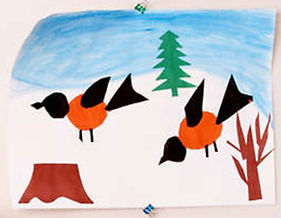
Thomas

How is the treatment of the disease
The intensity of treatment will depend on the extent and prognosis of the disease. In many cases the disease disappears without any treatment. In others, the treatment plan is established after evaluating the extent of the disease. The goal of treatment is to try to keep the disease under control and reduce the risk of reactivation.
Depending on the magnitude of the disease, it may be necessary to use cortisone, chemotherapy, surgery or small doses of radiotherapy. Although the disease can be cured in many cases, reactivations or sequelae that are difficult to predict may occur. More than 200 physicians and researchers from around the world, members of the International Histiocytosis Society, have been working for a long time on the development of new collaborative treatment protocols:
A) Treatments
· Corticosteroids:It is prescribed orally, and sometimes locally in the lesion, this helps to reduce the activity (or inflammation) of the disease.
· Chemotherapy: Orally or intravenously, the intensity of the treatment is related to the extent of the disease. In some cases it can cause some toxicity, especially decreasing blood cells.
· Radiotherapy, is used very rarely, in low doses, and only in certain cases in which corticosteroids or chemotherapy cannot be used.
B) Support measures
1. During the application of the treatment there is an increased risk of infections, which may require antibiotics. In case of fever during treatment and up to 6 months after its completion, the responsible physician should be contacted.
2. Pain, nausea or vomiting that may occur during treatment must be prevented or counteracted.
3. It is always of great importance for the patient to have psychological support from his close environment, social worker or psychologist.
4. Play is also important for children and "play therapy" in the hospital is important for these patients.
Continuation of treatment and controls



Histiwarriors United
After the symptoms have resolved, it may be necessary to continue treatment for a period of time to reduce the risk of re-activation and sequelae. The duration of treatment is highly variable depending on the extent and type of the disease.
Treatment Side Effects
Corticosteroids often increase appetite, leading to weight gain, and accumulation of fat on the face, chest, and shoulders. Stomach pain, heartburn and vomiting (gastritis) may occur, which can be prevented with medication. Some children have mood swings. Corticosteroids can increase the risk of infections, the severity of which generally depends on the degree of decrease in white blood cells.
Side effects caused by corticosteroids usually disappear after stopping treatment.
Chemotherapy can decrease the number of red, white, and platelet blood cells, causing anemia, infection, or bleeding. The patient may present lack of appetite, tiredness, nausea, constipation and hair loss. In general, the child can live as usual, go to school and interact with friends.

Emma
Some infections can be dangerous
Chickenpox, now rare, and measles can be dangerous if they occur during or soon after chemotherapy. As far as possible, the child should be protected from infection and should be monitored at school, nursery and other similar places.
The school and nursing staff can be of great help in this. If the child was exposed to chickenpox or measles, treatments are available. If the child was exposed to measles, gamma globulin should be given, unless the child was vaccinated.
In both cases, it is urgent to contact the hospital as soon as possible after contact with patients with these infections.
If the child has symptoms such as high fever, severe cough, breathing problems, sore throat or earache, they should see a doctor, usually at the clinic where they have their usual and follow-up treatment. With the appropriate antibiotics, most infections are cured quickly.
All vaccinations must be previously authorized by the doctor in charge of the patient.
The disease can vary greatly in its evolution, making it difficult to predict the duration of treatment. For some children the disease requires treatment for many years.

Controls
After the treatment has finished, blood tests and radiological studies continue. Growth, development and the eventual appearance of intense thirst and increased amount of urine are also monitored. It should also be assessed whether puberty is proceeding normally.
Forecast
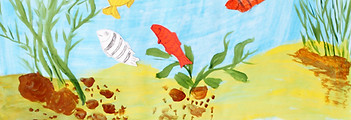
Langerhans cell histiocytosis is not an incurable disease. Most patients are cured, and there is a good chance that the number of cured patients will continue to increase. Patients under 2 years of age usually have a more generalized disease with involvement of organs such as the liver, spleen, and blood, which implies a more unfavorable prognosis. Current treatment protocols are being carried out in order to improve the prognosis of these more severe cases.
The family
Javi
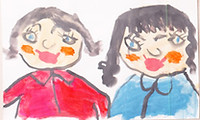
It is important to be willing to make many hospital visits and to be aware that there will be many studies to be carried out. One should try to be generous with oneself and with the child, and allow time to be together even more than before the diagnosis.
If possible, both parents should receive information about the diagnosis, test results and treatment at the same time.
It may also be helpful for brothers or sisters to visit the hospital, at least sometimes, to keep up with the progress.
Joanna
Ask what you want!

There are always many questions on the subject. No question is useless. If the parents, for example, would like to speak to the doctor without the child present, this can often be arranged, although in most cases these meetings can take place in the childs presence. Dont forget that you can get support from people other than your doctor. Contact with nurses, psychologists and other staff members can be helpful for the well-being of the patient and his family.
Internet: Alert for parents.
The Internet has its limitations. You may receive erroneous information in this way that does not match your child situation, for example, regarding the prognosis and the most appropriate treatment. This can generate a traumatic situation that can be avoided by receiving information from the professionals responsible for your child treatment.
Thanks
Our thanks to Dr. Jan Inge Henter, Professor of Pediatric Clinical Oncology in the Department of Womens and Childrens Health, Karolinska Institutet, Sweden.
Dr. Henter is the author of the information printed here and who selflessly offered us to use it for the benefit of patients and their families.
To the Swedish Association of Parents of Children with Histiocytosis and its president, our dear friend Urban Beino, for kindly making it available to us.
And to our consulting physicians Blanca Diez and Jorge Braier for collaborating with the revision of the Spanish translation.
Companies that collaborate







